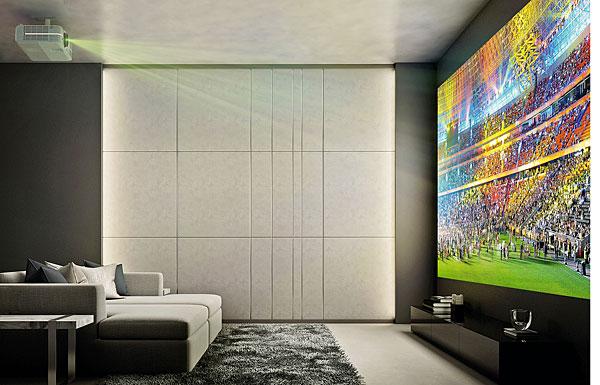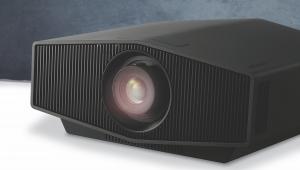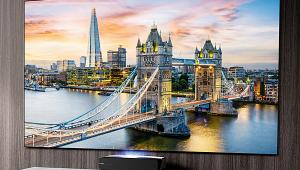Optoma UHD52ALV projector review

Much as we love projectors, trying to use them in a dark room can be a pain. Particularly if their remote controls don't have any backlighting.
Optoma's UHD52ALV delivers a solution to this eternal PJ problem: voice recognition. Plug in a supplied USB Wi-Fi dongle, and provided you have an Amazon Alexa or Google Home listening device, and the patience to set everything up, you can issue the projector with basic verbal instructions. 'Switch projector to HDMI 2', 'turn up the projector volume' and so on.
Helpful the UHD52ALV's voice recognition might be, it will need to be backed up by some decent picture quality before it floats my boat. The spec sheet at least suggests Optoma has given it the tools to succeed.
The projector's single-chip DLP optics claim a high 3,500 Lumens of maximum brightness, and an eye-catching 500,000:1 contrast ratio. This latter figure is the same as last year's Optoma UHD51ALVe, but the increased brightness (by 300 Lumens) ought to benefit HDR10 and HLG high dynamic range playback, and double down on the PJ's 'living room' credentials, where having enough brightness to combat at least some ambient light is key.
The UHD52ALV supports 4K playback via DLP's digital mirror device (DMD) 'flashing' technology (not a 'native 4K' solution), and offers welcome setup flexibility for both HDR and SDR replay. With HDR, for instance, you can choose Bright, Standard, Film or Detail presets, with each stepping down in brightness to eke out more picture info.
For SDR there's a long list of presets, including an effective Cinema mode, plus, unusually, an HDR Sim option that converts SDR to HDR.
Media Mogul
Voice interaction isn't the only smart feature the UHD52ALV provides. It's aimed at multimedia maestros and not just film fanatics, so supports multimedia playback from USB/Wi-Fi (with an in-built media player handling plenty of music, movie and photo formats), and screen mirroring of your smart devices via TapCast or iMirror apps.
Of more note to cinephiles, perhaps, is the projector's ISF certification; the unit offers full colour and white balance management. There's also processing for reducing judder (dubbed PureMotion), a feature not often found around this price.
Optoma's lens carries vertical image shifting as well as focus and 1.3x zoom rings, and connectivity is extensive. There are two HDMI 2.0 inputs able to handle 4K and HDR feeds up to 60Hz, and no fewer than four USB ports. One is for the aforementioned Wi-Fi dongle to kickstart voice assistant functionality. Or the same dongle can be used in another USB port for wireless media playback. Another socket is a media reader that doubles as a power provider for an HDMI streaming stick; a fourth is for service only.
Other connections include a 12V trigger, 3.5mm audio in/out, VGA input, and a digital optical audio output.
Born To Be Bright?
The Optoma UHD52ALV improves on the pictures of its predecessor. The extra luminance available makes the picture look sparky and more vibrant with HDR, and helps it hold its own better against bright-room conditions.
In fact, with HDR, it outperforms the vast majority of other living room (rather than dedicated cinema room) projectors.
For an 'affordable' model, it's convincingly bright and contrasty. It adds real punch to the gleaming reflections on the metal frame of the 'skinless' Terminator in Terminator: Dark Fate (4K Blu-ray), despite it also achieving a strikingly high level of baseline brightness.
 |
Home Cinema Choice #351 is on sale now, featuring: Samsung S95D flagship OLED TV; Ascendo loudspeakers; Pioneer VSA-LX805 AV receiver; UST projector roundup; 2024’s summer movies; Conan 4K; and more
|























































